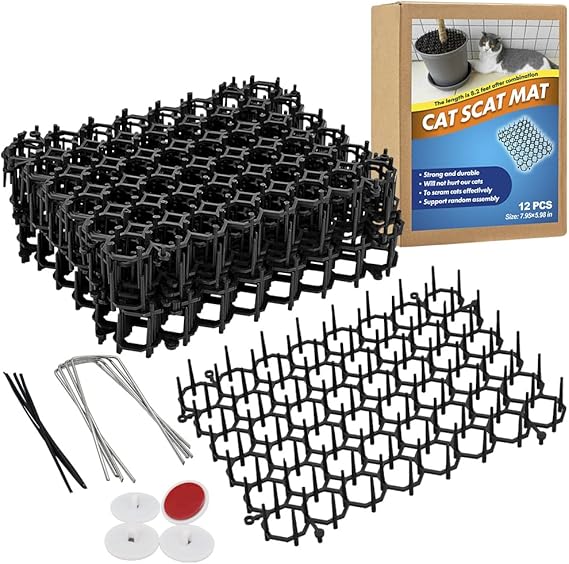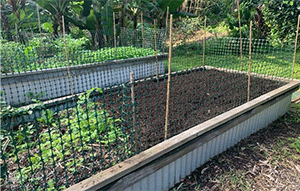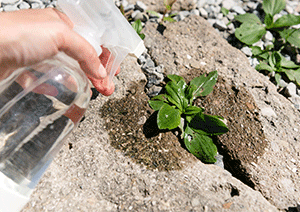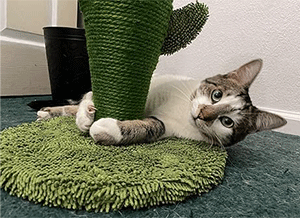Cats are curious creatures, and their fascination with indoor and outdoor plants can often lead to unwanted damage. Whether they’re digging in the soil, chewing on leaves, or using pots as litter boxes, keeping cats away from your plants can be a challenge. Here are some effective strategies to protect your plants from cats.
Other Topics You Might Like
Helpful Products You Might Like

Scat Mat for Cats with Spikes
NaturVet Pet Organics No Stay Spray

Orbit Yard Deterrent Sprinkler
"(Paid Links)" 
Use Physical Barriers
Fencing
For outdoor gardens, consider installing a fence around the area. Chicken wire or mesh can effectively keep cats out while still allowing sunlight and air to reach the plants.
Netting
Cover your plants with garden netting or mesh. This is particularly useful for delicate plants that cats might chew on.

Pebbles and Rocks
Cover the soil in your potted plants with decorative stones or rocks. This makes it difficult for cats to dig and discourages them from using the pot as a litter box.
Create Unpleasant Textures
Aluminum Foil
Cats dislike the texture and sound of aluminum foil. Placing foil sheets around your plants' base can deter them from getting too close.
Double-Sided Tape
Applying double-sided tape to the edges of plant pots or the soil's surface can create a sticky sensation that cats find unpleasant.
Pine Cones and Citrus Peels
Place pine cones or citrus peels around the base of your plants. The texture and smell can be effective in keeping cats away.
Use Natural Repellents
Citrus Spray
Cats are generally repelled by the smell of citrus. You can make a natural repellent by mixing water with lemon, lime, or orange juice and spraying it around your plants.
Vinegar Solution

A diluted vinegar solution (one part vinegar to three parts water) can be sprayed around the plant’s base. The pungent smell of vinegar can deter cats from approaching.
Essential Oils
Certain essential oils, like lavender, peppermint, and eucalyptus, are known to repel cats. Dilute a few drops of essential oil in water and spray around your plants.
Provide Alternatives
Cat Grass
Plant cat grass (wheatgrass) in an accessible location for your cats. This can satisfy their need to chew on greenery and divert their attention from your other plants.
Scratching Posts and Toys
Provide plenty of scratching posts, climbing structures, and toys to keep your cats entertained and less interested in your plants.

Modify Plant Placement
High Shelves and Hanging Baskets
Place plants on high shelves or hanging baskets that are out of your cat’s reach. This protects the plants and adds a decorative element to your home.
Plant Terrariums
For smaller plants, use closed terrariums. These can protect the plants from cats while creating a beautiful display.
Training and Positive Reinforcement
Training
Use positive reinforcement to train your cats to stay away from plants. When they show interest in the plants, distract them with a toy or treat and reward them for staying away.
Consistency
Be consistent with your training methods. Over time, your cats will learn which areas are off-limits.
Safe Plants for Cats
Non-Toxic Plants
Choose non-toxic plants that are safe for cats. Some cat-friendly plants include spider plants, Boston ferns, and baby’s tears.
Avoid Toxic Plants
Be aware of toxic plants to cats, such as lilies, poinsettias, and certain types of ivy. The best practice is to keep toxic plants out of reach or out of your home altogether.
Conclusion
Protecting your plants from cats requires a combination of physical barriers, natural repellents, and alternative distractions. By implementing these strategies, you can create a harmonious environment where both your plants and cats can coexist peacefully. Whether you choose to use natural deterrents, train your cats, or rearrange your plant placement, there are plenty of ways to keep your greenery safe and your feline friends happy.
